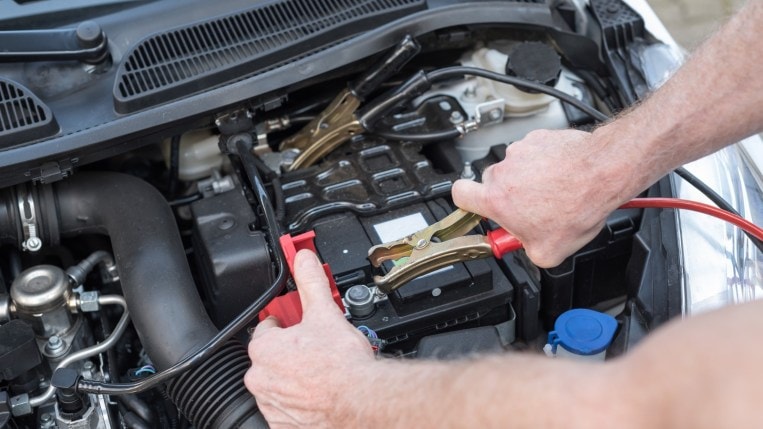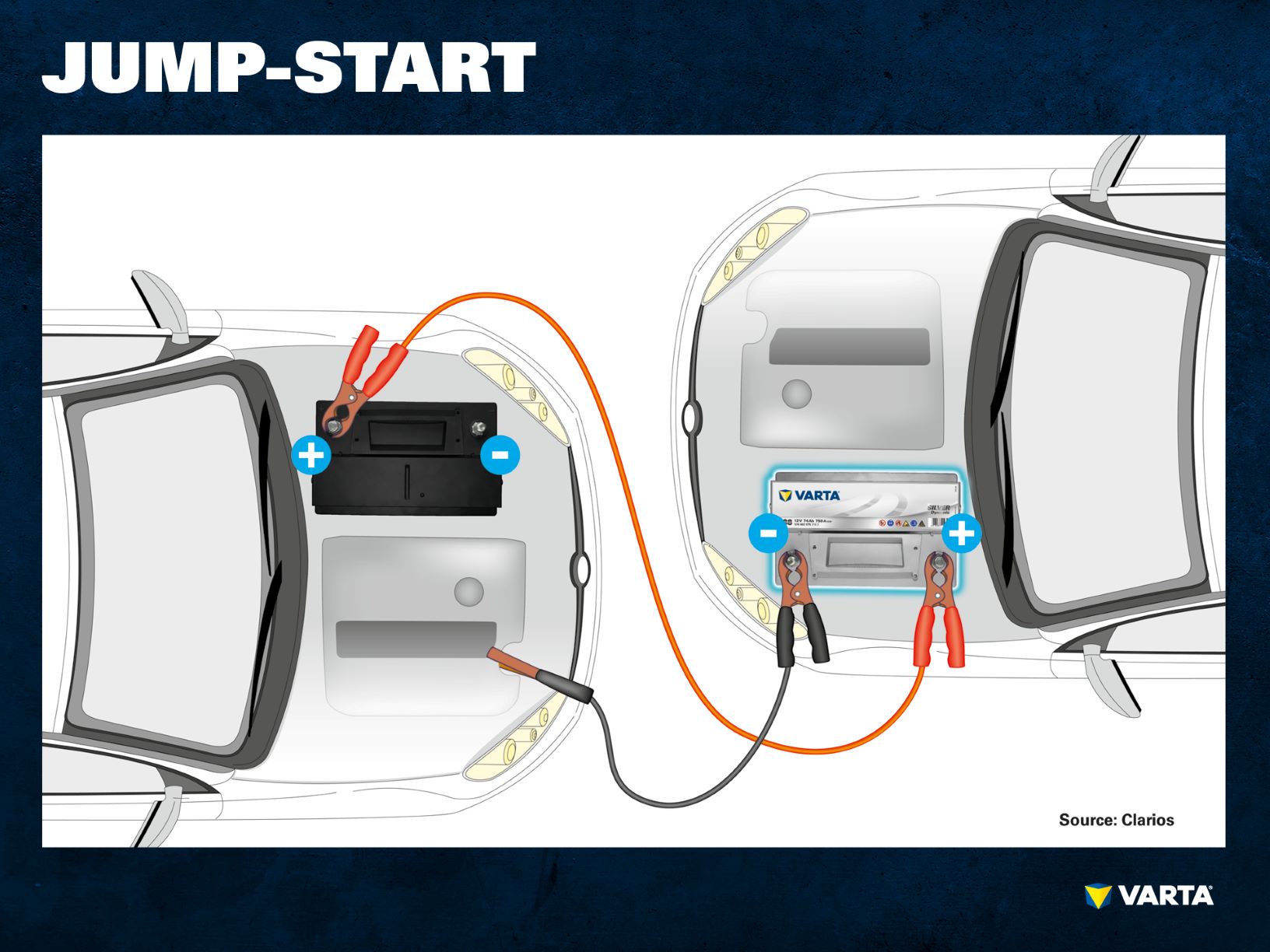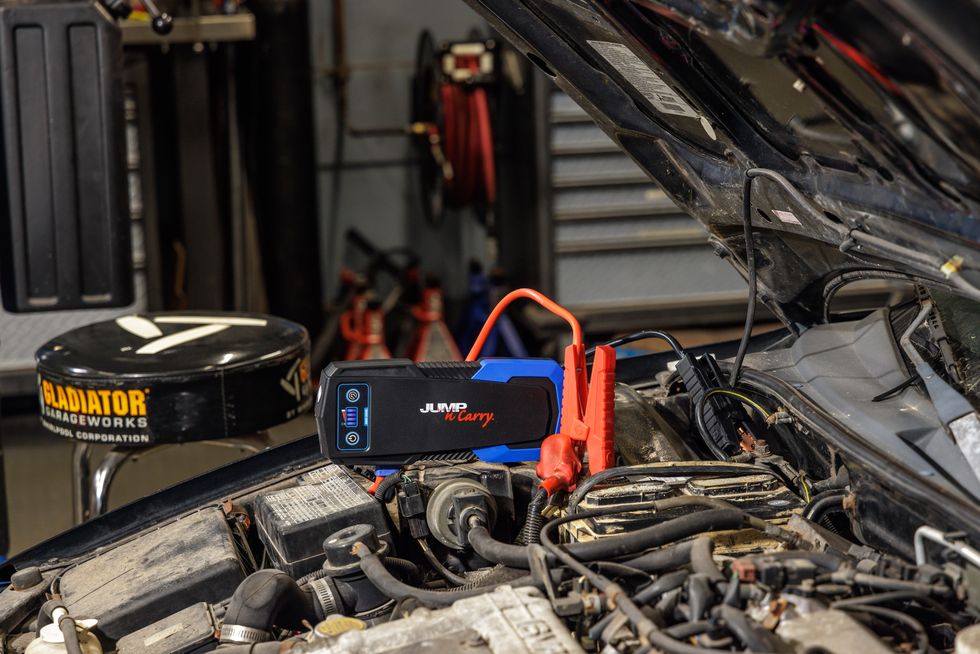Car problems can be frustrating. One common issue is a car that only starts when jumped.
If you’ve experienced this, you know how inconvenient it can be. Understanding why your car only starts with a jump can save you time and money. The root cause could be many things, from a weak battery to a faulty alternator.
Knowing what to look for can help you get back on the road quickly. In this blog, we’ll explore the common reasons behind this issue. We’ll also offer some tips on how to diagnose and fix it yourself. Stay tuned to learn more and ensure your car starts smoothly every time.

Credit: www.kbb.com
Common Symptoms
When your car only starts with a jump, several symptoms can indicate the root cause. Recognizing these signs can help you troubleshoot and understand the issue better. Below are some common symptoms to look for.
Slow Engine Crank
A slow engine crank is a clear sign of trouble. When you turn the key, the engine turns over slowly. This sluggishness often points to a weak or dying battery. The starter motor struggles to get enough power. This symptom is easy to notice and should be addressed immediately.
Clicking Noise
A clicking noise is another common symptom. When you try to start your car, you may hear a series of clicks. This usually indicates a problem with the starter motor or the battery. The clicking happens because the starter motor cannot engage fully. It tries but fails due to low voltage or a faulty connection.
Initial Checks
When a car only starts with a jump, it can be frustrating. Before panicking, perform some initial checks. These checks help identify simple issues. Starting with the basics is always a good idea.
Battery Terminals
First, inspect the battery terminals. They connect the battery to the car. Loose or dirty terminals can prevent the car from starting. Make sure they are tight and clean.
Corrosion Build-up
Next, look for corrosion build-up. Corrosion appears as a white or greenish substance. It forms on the battery terminals. This build-up can block the flow of electricity. Clean it off with a battery terminal cleaner or a mixture of baking soda and water.
Testing The Battery
When your car only starts when jumped, the battery might be the issue. Testing the battery can help you determine if it needs replacing. This section will guide you on how to test your battery using two methods: the voltage test and the load test.
Voltage Test
A voltage test checks the power level of your battery. To start, you will need a multimeter. Set the multimeter to measure DC voltage. Connect the red probe to the battery’s positive terminal. Connect the black probe to the negative terminal. Read the voltage on the multimeter. A healthy battery should read between 12.4 and 12.7 volts. If the reading is below 12.4 volts, your battery may be weak or dying.
Load Test
A load test checks how well your battery performs under stress. For this test, you will need a load tester. First, connect the load tester to the battery terminals. Follow the device instructions to apply a load for a specific time. Observe the battery voltage during the test. The voltage should not drop below 10 volts. If it does, the battery may not hold a charge well under load. This indicates the battery might need replacement.

Credit: batteryworld.varta-automotive.com
Inspecting The Alternator
Experiencing a car that only starts with a jump can be frustrating. One common culprit is the alternator. It’s essential to inspect it to determine if it’s functioning correctly. A faulty alternator can fail to charge the battery, leading to frequent jump-starts. In this section, we will discuss how to inspect the alternator, focusing on key areas such as the alternator belt and output voltage.
Alternator Belt
The alternator belt plays a crucial role in the proper functioning of the alternator. Start by examining the belt for any signs of wear and tear. A worn-out belt can slip and fail to drive the alternator efficiently. Here are a few steps to inspect the alternator belt:
- Check for cracks: Look closely for any visible cracks or splits on the belt’s surface.
- Inspect tension: Ensure the belt has the correct tension. It shouldn’t be too loose or too tight.
- Listen for noises: A squealing noise when the engine starts can indicate a belt issue.
Output Voltage
Another critical aspect is the alternator’s output voltage. It should provide enough power to charge the battery and run electrical systems. Follow these steps to check the output voltage:
- Use a multimeter: Set your multimeter to DC voltage.
- Check battery voltage: Connect the multimeter leads to the battery terminals. A healthy alternator should show a voltage between 13.8V and 14.4V when the engine is running.
- Test under load: Turn on headlights and other electrical systems. The voltage should remain stable.
If the voltage is lower than the specified range, the alternator might be faulty. Consider professional inspection or replacement.
Examining The Starter
If your car only starts when jumped, the starter might be the issue. The starter is crucial for getting your engine running. Let’s examine the starter motor and the solenoid function.
Starter Motor
The starter motor is a small electric motor. It turns the engine over, allowing it to start. When the key is turned, the motor draws power from the battery. If the motor is faulty, it may not turn the engine. Listen for a clicking sound when you turn the key. This can indicate a problem with the starter motor.
Solenoid Function
The solenoid is a small cylinder attached to the starter motor. It acts as a switch. When you turn the key, the solenoid sends power to the starter motor. If the solenoid is faulty, the motor may not receive power. This can prevent the car from starting. Check for a clicking noise. No click might mean a bad solenoid.
Checking Electrical System
When your car only starts with a jump, the electrical system may be at fault. Checking the electrical system can help identify and fix the issue. Let’s explore some key areas to examine.
Fuses And Relays
First, inspect the fuses. If a fuse is blown, the circuit it protects won’t work. This can prevent the car from starting. Use a fuse tester or multimeter to check each fuse. Replace any that are blown.
Next, examine the relays. Relays are switches controlled by electricity. A faulty relay can stop the car from starting. Swap the suspect relay with a similar one that works. If the car starts, you’ve found the problem.
Wiring Issues
Wiring problems can also prevent a car from starting. Look for frayed or broken wires. These can cause a loss of power to the starter or other parts of the electrical system.
Check for corrosion on the battery terminals and connectors. Corrosion can block the flow of electricity. Clean any corrosion with a wire brush and reconnect securely.
Inspect the ground connections. A bad ground can cause starting issues. Ensure all ground points are clean and tight.
By following these steps, you can diagnose and fix electrical issues that prevent your car from starting without a jump.
Battery Maintenance Tips
Keeping your car’s battery in good condition is vital. A well-maintained battery ensures your car starts without a hitch. Focus on these essential tips to prolong your battery’s life.
Regular Cleaning
Dirt and corrosion can affect your battery’s performance. Clean your battery regularly to avoid these issues.
- Disconnect the battery: Remove the negative cable first, then the positive.
- Clean the terminals: Use a brush and a baking soda solution.
- Dry the battery: Wipe it with a clean cloth to remove moisture.
- Reconnect the battery: Attach the positive cable first, then the negative.
Proper Charging
Overcharging or undercharging can damage your battery. Follow these steps for proper charging.
- Use the right charger: Ensure it matches your battery’s specifications.
- Charge in a ventilated area: This prevents overheating and gas buildup.
- Monitor the charging process: Check the progress and stop once fully charged.
- Avoid frequent deep discharges: They reduce the battery’s lifespan.
Maintaining your car battery with these simple tips will help you avoid the inconvenience of a car that only starts when jumped. Regular cleaning and proper charging go a long way in ensuring your battery remains reliable.
When To Seek Professional Help
If your car only starts when jumped, it may need a professional mechanic. This issue could indicate battery or electrical problems. Seeking expert help ensures safe and reliable repairs.
Your car only starts when jumped. This is more than a simple inconvenience. It can signal deeper issues. Knowing when to seek professional help can save time and money.Persistent Issues
If the problem occurs frequently, it’s time to call a mechanic. A battery might be at fault. But it could also be something else. Alternators, starters, or wiring issues can cause similar symptoms. Persistent issues are warning signs. Professional help ensures accurate diagnosis and repair.Complex Diagnostics
Modern cars have complex systems. Diagnosing issues often requires specialized tools. Mechanics use these tools to test electrical systems. They check battery health and alternator function. They also inspect wiring and connections. Complex diagnostics go beyond what most car owners can handle. Seeking professional help ensures thorough checks and accurate fixes. “`
Credit: www.caranddriver.com
Frequently Asked Questions
Why Does My Car Only Start When Jumped?
Your car battery might be weak or dead. A faulty alternator can also cause this issue.
How Can I Check If My Car Battery Is Bad?
Check for dim headlights and slow engine crank. Test the battery with a voltmeter.
Can A Bad Alternator Prevent My Car From Starting?
Yes, a bad alternator can’t charge the battery. This prevents the car from starting.
How Often Should I Replace My Car Battery?
Replace your car battery every 3-5 years. Check for signs of wear and tear.
What Should I Do If My Car Won’t Start?
Check the battery and alternator first. If still stuck, call a professional mechanic.
Conclusion
Resolving a car that only starts when jumped can be frustrating. Check the battery first. Inspect the cables and connections. Ensure the alternator works properly. Regular maintenance prevents many issues. Consider professional help if problems persist. Consistent car care ensures reliability.
Avoid getting stranded by addressing issues early. Stay proactive, and your car will thank you.
